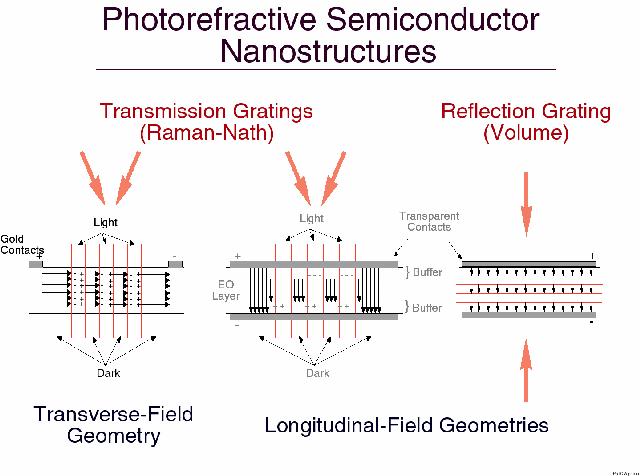
Photorefractive quantum wells (PRQW) were first developed as an outgrowth of ultrafast photoconductor technology which used semiinsulating quantum wells for electroabsorption sampling. The semiinsulating properties coexisted with the enhanced electroabsorption properties of the quantum well, providing a material with both high trap concentrations and strong electro-optic effects. These conditions are also compatible with photorefractive effects, which were first demonstrated in an AlGaAs multiple quantum well structure [1].
Three PRQW geometries are classified according to the direction of the beam propagation (or grating vector) and the direction of the applied electric field. In terms of the grating geometry, there are two transmission grating geometries and one reflection grating geometry. In terms of the field geometry, there are two longitudinal-field geometries that use the quantum-confined Stark effect (QCSE) and one transverse-field geometry that uses the Franz-Keldysh effect.
[1] D. D. Nolte, D. H. Olson, G. E. Doran, W. H. Knox and A. M. Glass,
J. Opt. Soc. Am. B7, 2217 (1990)
See Also:
Asymmetric Fabry Perot structure (pdf)
p-i-n Photorefractive Diode structure (pdf)

This figure shows the three different photorefractive quantum well geometries. They are categorized by the direction of the applied electric field, and by the direction of the hologram writing beams.